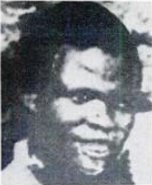South Africa conducted its last execution on this date in 1989: that of Solomon Ngobeni, for robbing and murdering a taxi driver.
Apartheid South Africa had long been one of the world’s most prolific users of capital punishment. According to Wikipedia it had logged nearly 3,000 executions over the 30 years previous, including a one-year count of 164 as recently as 1987.
But the policy was about to see a sudden reversal — along with the policy of apartheid itself.
Earlier that same year, the South African presidency had been assumed by F.W. de Klerk. Much to everyone’s surprise, the copper-bottomed Nationalist Party conservative set about dismantling the entire white-rule infrastructure. Once he’d secured his term de Klerk moved with alacrity, immediately permitting some anti-apartheid marches that his security services wanted to shut down and proceeding apace to more dramatic reforms that within a few years saw off apartheid altogether.
Shuttering the Pretoria Central Prison gallows was one early gesture in this same campaign, considering the many martyrs that platform had made of regime opponents down the years. In 1990, de Klerk pronounced a formal moratorium on executions and he never lifted it; in 1995, the first politically weighty ruling of the post-apartheid Constitutional Court abolished capital punishment.
However, Ngobeni has no assurance of maintaining his milestone distinction in perpetuity. In present-day South Africa, blighted by a great deal of violent crime, reinstatement of capital punishment enjoys the support of several political parties and a sizable majority of the public.
On this day..
- 2018: The Sultan of Coins
- 1879: Charles Drews and Frank Stichler, graveyard insurance
- 1738: False Tsarevich Alexei
- Daily Double: Georgia
- 1996: Larry Lonchar, bad gambler
- 1864: Franz Muller, "Ich habe es getan"
- 1888: William Showers, "pathetic soul"
- 1930: Yang Kaihui, Mao Zedong's wife
- 1960: Phineas Tshitaundzi, the panga man
- 1963: Four Cubans as CIA spies
- 1726: The Gypsy outlaws of Hesse-Darmstadt
- 1817: Policarpa Salavarrieta, Colombian independence heroine
- 1226: Frederick of Isenberg

 Confrontations throughout South Africa following Sharpeville led the white government to declare a
Confrontations throughout South Africa following Sharpeville led the white government to declare a 
 Moloise’s controversial execution occurred in the context of
Moloise’s controversial execution occurred in the context of 

